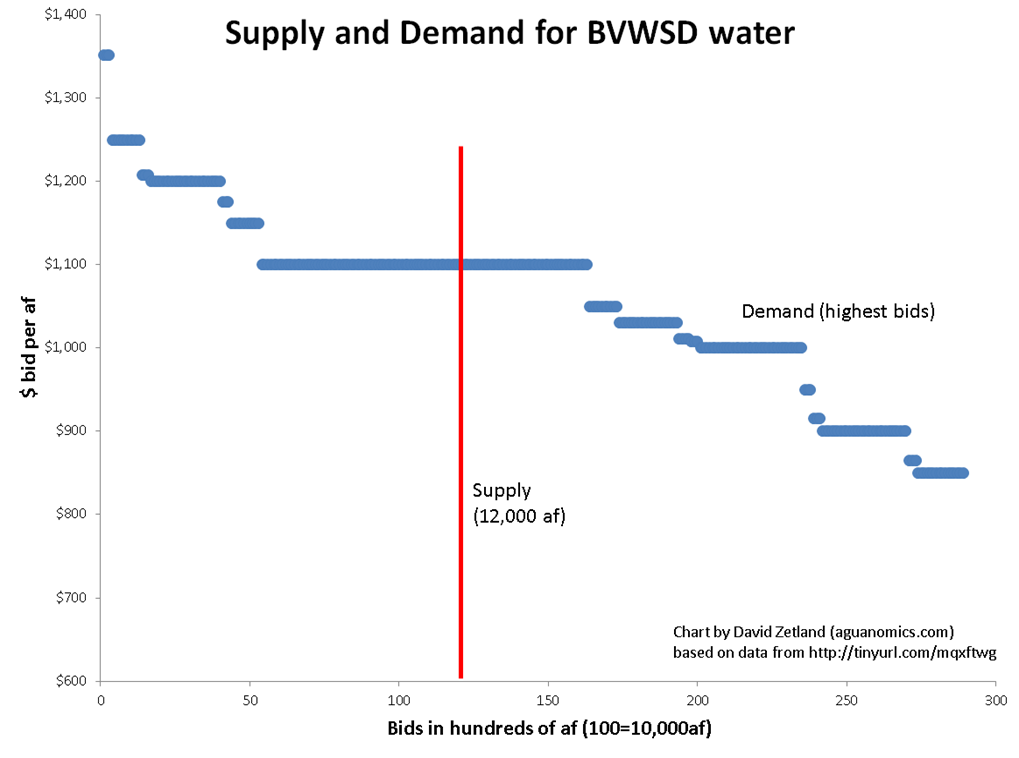Mac Hodell, global director of management consulting – strategic planning services
Earlier this year, in drought-stricken California, the Buena Vista Water Storage District held an auction to allocate water supplies in support of a larger water conservation program. With the funds they raised, the District intended to pay farmers NOT to farm; thereby reducing demand on the water supply. Throughout the bidding process, a few interesting things happened:
- The clearing bid ($1100 / acre-foot) nearly doubled the minimum bid level.
- The volume of bids (63k af) was over 5 times the supply being auctioned, indicating strong demand.
- Ranching and farming communities produced the largest volume of bids and highest price bids, while municipal water districts accounted for the lowest price bids.
But what does this mean for utilities and other communities? Based on the bid information, we can infer the ‘demand curve’ in the region:
Graphic credit: David Zetland
This raises some interesting implications for the water industry:
- While the true value of water is increasing, we are seeing the financial implications.
- As a result of this, the application of economic concepts and tools are more and more important in the industry.
a. As the value of water increases, water rates will increase.
b. Cost allocation, cost-of-service and affordability analyses will be required to justify and direct pricing changes.
c. Water and wastewater utilities must demonstrate the increasing levels of operational cost efficiency in order to justify rate increases.
d. As the value of water increases, the value of conservation and efficiency will also increase.
e. Prioritization will become increasingly important. Using economic, social and environmental lenses will be required as we do more with less as we see competition for increasingly scarce resources. Utilities will need to analyze the risks of different courses of action and communicate these implications to stakeholders.
This isn’t to say that money is now the only factor to consider… Ensuring that the environment receives its proper weighting in decision making will be ever more important. Even if more water supplies get allocated via markets, communities can still reserve some portion of supply for the environment, such as to ensure adequate minimum flows. But the confluence of the technical, environmental and economic domains offers opportunity for utilities to consider different benefits and prioritize according to operational and capital needs.
Imagine: As technology advances, the economic level of leakage will be reduced. The relative advantages of centralized scale versus decentralized facilities could shift. The productivity per worker will increase, thus re-shaping the size, shape and skills of your future workforce.
As you look at your business, consider the role of planning and financial considerations. What level of importance are social, technical, environmental and economic factors given your utility’s decision-making process?

